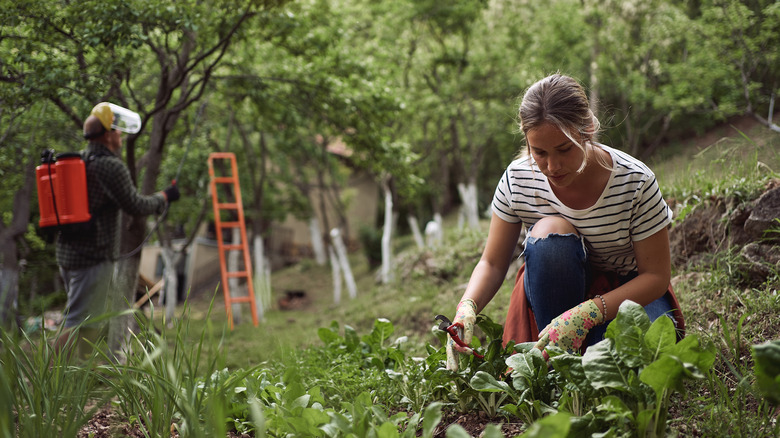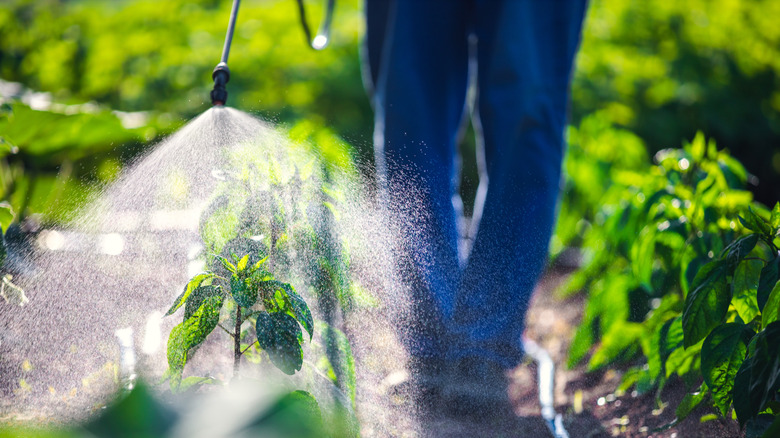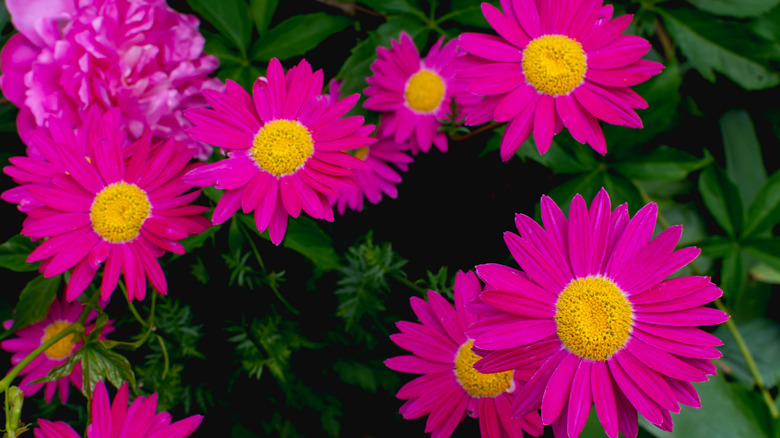This Gorgeous Flower Is A Garden Pest's Worst Nightmare
Painted daisy (Tanacetum coccineum) is a charming flowering perennial that many gardeners plant simply because they are beautiful, free flowering, and easy to grow. Related to the aster family, it is also called the pyrethrum plant. The daisy-like blooms are pink, purple, red, or white and bloom all summer long, giving you loads of fresh-cut flowers for bouquets. Averaging about 2 feet tall and as wide, painted daisy loves full sun but will do well with afternoon shade in hot summer areas. With soft, fern-like foliage, they are a great pick for anyone wanting to add color and texture to their cottage garden design. However, these flowers are more than just a pretty face. They produce a key ingredient for natural pest control called pyrethrum.
According to National Geographic, pyrethrum attacks an insect's central nervous system, first paralyzing it and then killing it. It is extracted from the plant flowers themselves and then sold as both powder and liquid insecticide. It is also an effective bug deterrent. Because the plant itself is discouraging to most bugs, you can use it to repel destructive insects just by planting it in the garden and on the patio.
How pyrethrum is used as natural garden pest control
While pyrethrum has relatively low toxicity for humans, cats, and dogs, it is deadly for various harmful bugs. Aphids, whiteflies, thrips, and spider mites are some of the common garden pests that are killed by pyrethrum. Remember, organic insecticides can also affect beneficial insects such as bees and butterflies, so make sure you use pyrethrum only when and where it's necessary. Try applying it late in the evening when pollinator bugs aren't out. The good news is that pyrethrum breaks down very quickly and loses its toxicity in just a couple of days.
To use pyrethrum, you can purchase it at your local home improvement store or nursery. It's a great idea to wear gloves while using it, because even though it isn't especially harmful to humans, some people find it very irritating to the skin. While it is considered safe to use on vegetables, be sure to wash produce before eating. If you follow the manufacturer's instructions and spray or powder the pest-affected plants, the hostile insects should begin dying within minutes.
Growing pyrethrum plant
Growing the pyrethrum plant — aka painted daisy — is really easy. They grow best in hardiness Zones 3-7, though you can grow them as annuals in colder regions. Painted daisies need at least six hours of sun a day to produce the best flowers. You can grow them in partial shade but expect fewer blooms. Preferring well-drained, sandy to loam soil, this plant will languish in clay soil. You can improve clay soil by adding organic matter. They are drought-resistant plants once established, and they generally like their soil moist but not overly wet. These pretty flowers are deer-resistant, so you don't have to worry about them getting eaten to the ground overnight, as deer tend to do with many plants. Oh, and the butterflies love them.
You can grow these plants from seed or take cuttings from new growth in early summer to create more plants. Keep in mind while planting and handling this plant to avoid the sap, as it is a known skin irritant.


